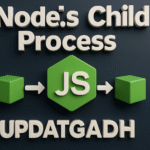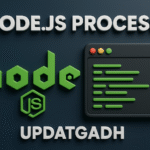
Best Recruitment Management System Using Django
Recruitment Management System Using Django
Managing the recruitment process manually can be time-consuming and confusing, especially for companies that deal with multiple job openings and applicants at the same time. The Recruitment Management System (RMS) solves this problem by offering a Django-based web application that makes the hiring process faster, more structured, and transparent.With this system, organizations can easily manage job postings, track applicants, and assign different user roles. It not only reduces paperwork but also helps HR teams and managers make smarter decisions with all information stored in one place.From a student’s perspective, working with this project is very useful because it shows how Django’s MVC architecture works in a practical application. It also gives insight into how real-world recruitment workflows can be designed digitally—making it a great learning experience for anyone interested in web development and HR tech solutions.
Project Overview
| Parameter | Details |
|---|---|
| Project Name | Recruitment Management System |
| Language/s Used | Python (Django Framework), HTML, CSS |
| Database | SQLite (default in Django) |
| Type | Web Application |
Download New Real Time Projects :–Click here
Available Features
The RMS project includes the following core features:
- Authentication
Users can register, log in, and access system features based on their assigned role. - User Roles
- Administrator: Manages system settings, job openings, applicants, and users.
- Hiring Manager: Creates job openings, manages applicants, and oversees users assigned to their jobs.
- Applicant: Applies for available jobs and checks application status.
- Job Openings
Administrators and hiring managers can create openings with details like job title, description, salary, and required skills. Applicants can view and apply to these openings. - Applicant Management
Hiring managers and admins can review applications, update statuses, schedule interviews, and communicate with applicants. - User Management
Administrators can create, edit, and assign roles to users, ensuring smooth access control.
Installation Guide (VS Code)
Follow these steps to set up and run the RMS project on your local system using Visual Studio Code:
- Clone or Extract the Project
Download or clone the project folder to your local machine. - Open in VS Code
Open the project folder in Visual Studio Code. - Create Virtual Environment
Open the terminal in VS Code and run:python -m venv venvActivate the environment:- On Windows:
venv\Scripts\activate - On macOS/Linux:
source venv/bin/activate
- On Windows:
- Install Dependencies
Run the following command in the terminal:pip install -r requirements.txt - Set Environment Variables
Create a.envfile in the root directory and set values like:SECRET_KEY=your_secret_key DATABASE_URL=sqlite:///db.sqlite3 DATABASE_NAME=db.sqlite3 - Apply Migrations
Run:python manage.py migrate - Create Superuser
python manage.py createsuperuser - Run the Server
python manage.py runserver - Access the Application
Open your browser and go to:http://localhost:8000
Usage
The system’s functionality varies depending on the role:
- Administrator
- Creates and manages job openings.
- Manages applicants and their statuses.
- Controls all users and system settings.
- Hiring Manager
- Posts job openings with relevant details.
- Reviews applicants, updates statuses, and communicates with candidates.
- Manages users assigned to their openings.
- Applicant
- Registers or logs in to the system.
- Views available job postings.
- Applies for jobs and tracks application progress.
This separation of roles ensures the recruitment process is clear, secure, and efficient.
Contributing
Students and developers are welcome to improve the RMS project by:
- Enhancing the user interface.
- Adding new features like resume parsing or AI-based candidate matching.
- Optimizing the database structure for large-scale usage
License
This project is licensed for educational and learning purposes. Users can modify and expand the system according to their needs.
Final Thoughts
From a student’s perspective, working on the Recruitment Management System is highly beneficial. It not only strengthens understanding of Django frameworks, user authentication, and database integration but also provides real-world insight into how companies manage their hiring processes.
In real-life application, this project can help small to mid-sized businesses digitalize their recruitment, reducing manual work and ensuring a smoother hiring experience. For students, it’s a great portfolio project that demonstrates practical problem-solving and web development skills.
We have projects Available in all languages:–Click Here
recruitment management system using django github
recruitment management system using django with source code
recruitment management system using django ppt
recruitment management system using django pdf
recruitment management system using django geeksforgeeks
recruitment management system using django example
recruitment-management-system github
recruitment management system project

















Post Comment